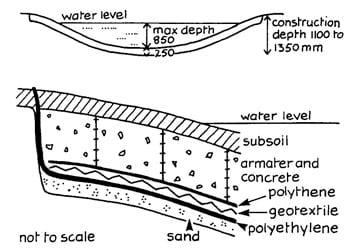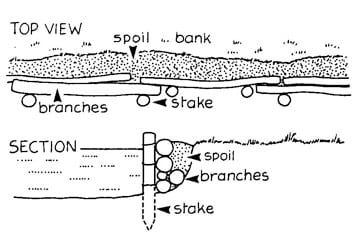Learn how to maintain and improve our valuable waterways – bodies of fresh water, springs, ponds, lakes, streams, rivers, canals and ditches.
‘Waterways’ includes bodies of fresh water, springs, ponds, lakes, streams, rivers, canals and ditches. ‘Wetlands’ describes sites which are waterlogged or water-covered for a significant part of the year, including swamps, marshes, bogs, fens and wet grasslands.
Of all parts of the natural environment, waterways and wetlands are amongst the most threatened.
What to expect
Waterways & Wetlands subjects
Background info

Loads of background information about ponds, waterways and wetlands, their ecology, management and the law, and safe working practices.
Habitat creation

Clear, step-by-step, practical techniques for creating and managing ponds. A look at linings and what to plant to ensure success.
Habitat management

An in-depth look at restoring existing ponds and waterways, as well as an overview of vegetation and many features, like islands and dams.
Waterways & Wetlands: a practical handbook – chapters
The original, printed TCV handbook “Waterways & Wetlands, a practical handbook” contained 169 pages. Every one of these pages is included in these digital versions.
What is in the handbooks?
Step by step
All the processes in the handbooks are explained in easy to follow language, using step-by-step guides that are ideal for all levels.
Clearly Illustrated
Over 2,000 helpful illustrations accompany the text, adding clarity.
Comprehensive
The handbooks cover all the topics you need to improve your skills and knowledge.
Definitive
Written by conservation experts, the handbooks are highly valued by users across the conservation sector.




